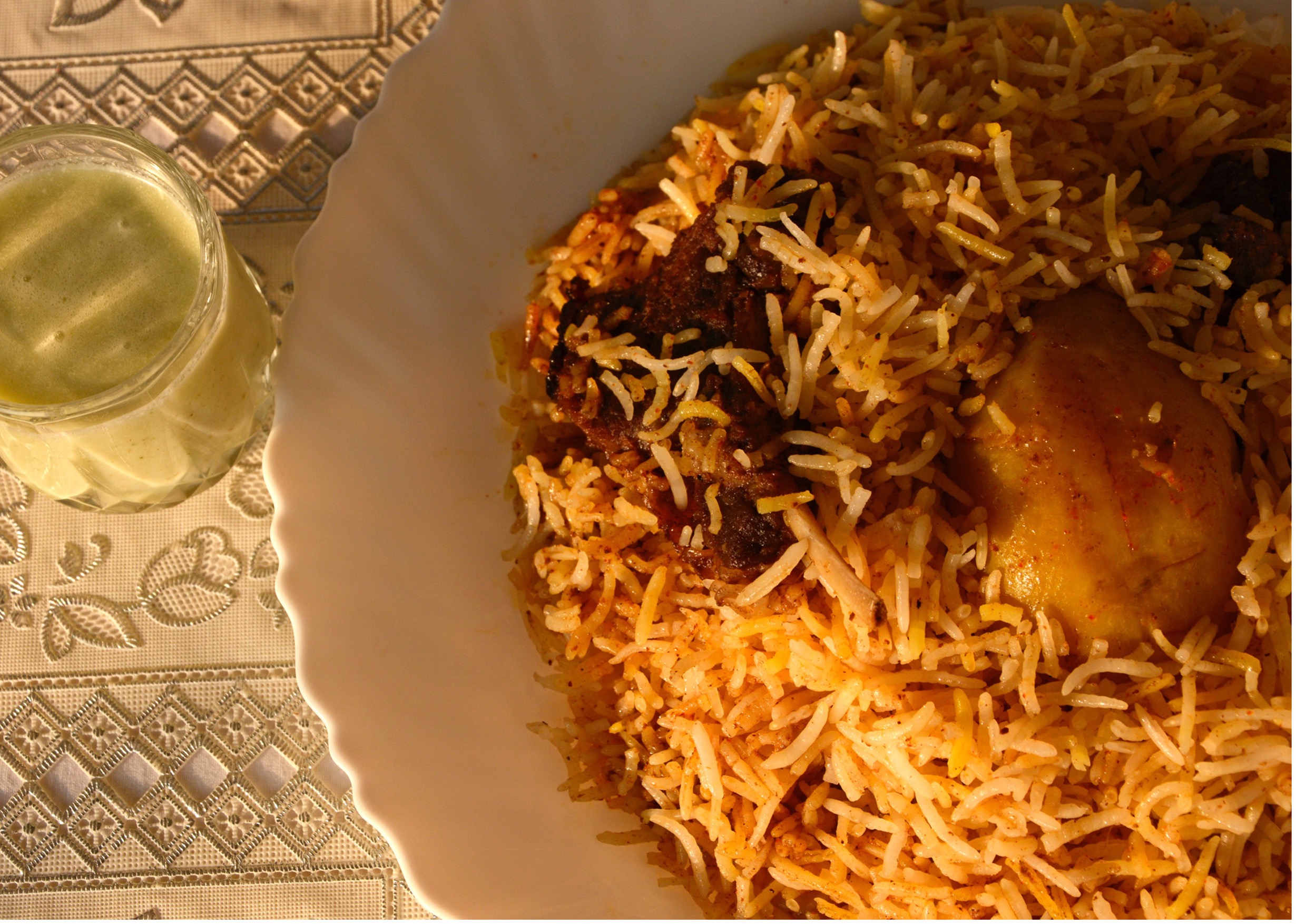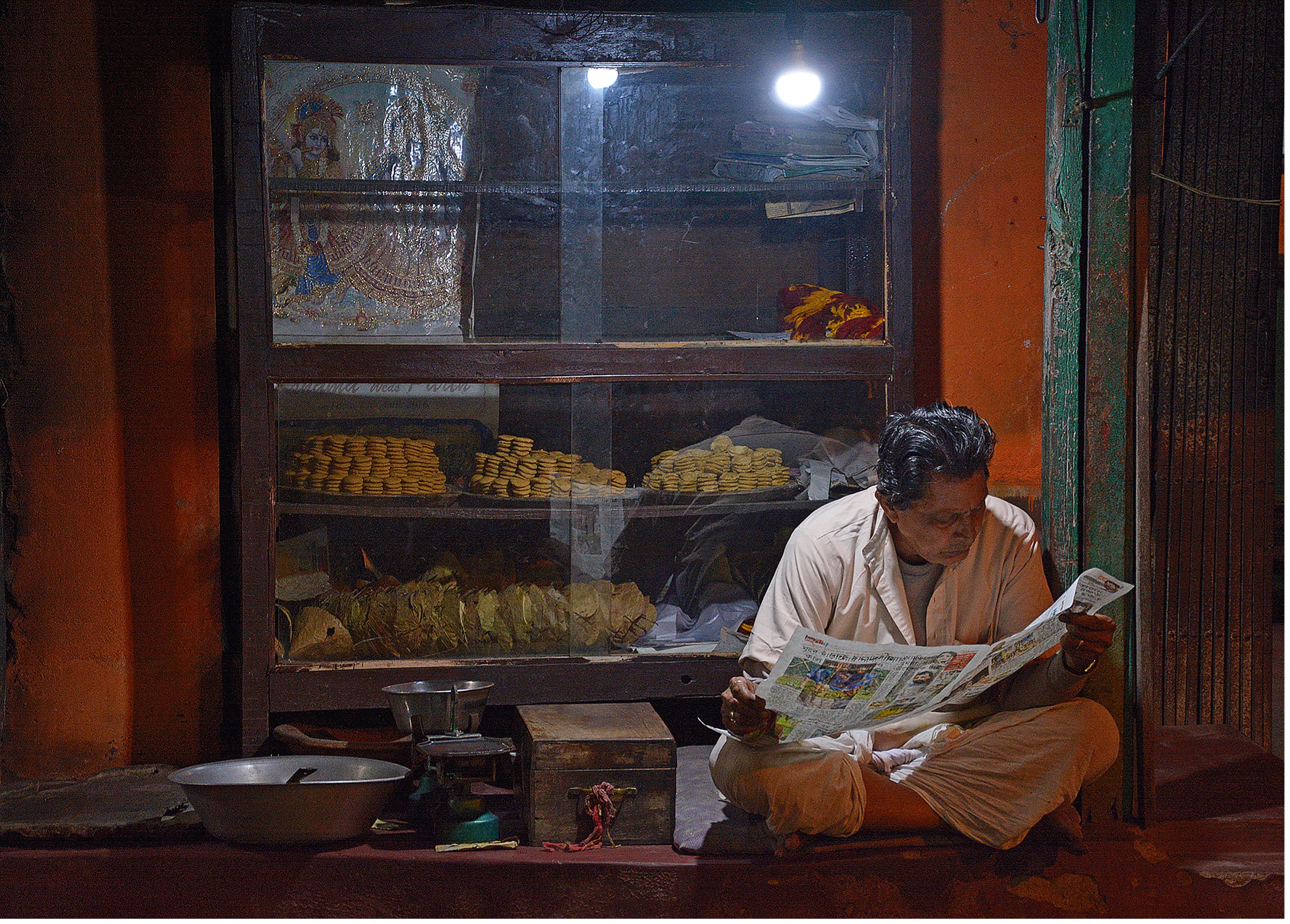
Kolkata Shahi Biriyani; perhaps the most cherished and satisfying meal that has made a place for itself in the rice loving city. Anyone with a Kolkata connection will vouch for this dish voting for the creamy chunky potato that is its signature. The backstory to the introduction of the potato in biriyani is now a part of Kolkata food lore. On the side is a small serving of Shahi Borhani, a traditional yogurt drink, considered as digestive, post a heavy meal. Photo by Irfan Nabi
A lot was happening in the social circle of Calcutta in the nineteenth century and yet all seems profane in comparison to the happenings that took place in and around the address 11 Garden Reach. Here lived the last king of colonized India, Nawab Wajid Ali Shah, a tenant of the Maharaja of Burdwan, Chand Mehtab Bahadur, for a rent of `500 rupees a month. How instrumental the Nawab was in reinventing the foodscape of Calcutta will follow later, but to understand his love for good food, it is critical to know him and the last 30 years of his life, while he was exiled in Garden Reach.
The Nawab wanted to replicate Lucknow and in bargain, Calcutta got more than what it could have ever imagined. His personal rakabdars, khansamas and bawarchis, who had joined the rushed entourage that Wajid Ali Shah took in 1856 as he headed to London, were the key players in retaining the culinary culture of Awadh. The detour that was forced upon him after he was imprisoned in Fort William by the British brought the entire population to Metiaburj (meaning, a fortress made of clay) or present-day Garden Reach area. The scale of happenings is rather indescribable, but in just two years from his arrival, an estimated 300 households grew around 11 Garden Reach, with the mansion he lived in, renamed Sultan Khana. In here, at the Nawab’s royal kitchen, the art of cooking continued which eventually percolated into the public domain, destined to be immortalized. The Nawab, who identified himself as a man of refined tastes, which indeed he was, introduced Calcutta to the technique of dum (cooking on slow fire), and the use of yogurt in meat and fish preparations, along with the induction of aromatic spices, primarily saffron and cardamom.
What the city has embraced as its identity today: the scrumptious biryani, with its
signature chunky piece of boiled potato, the delectable rezala, and many kebabs and
kathi rolls are all contributions of Wajid Ali Shah and his amazing band of chefs, who
after his demise, found employment of some stature with the dak bungalows and
English Clubs and even later at upcoming hotels of the city, some going on to become
head cooks. Some even started their own ventures.

A quintessential mishtir dokan or sweetshop in Kolkata. Similar innumerable outlets dot the city and have been crucial in retaining the culture of sweetmeat that Kolkata is famed for. Photo by Irfan Nabi
To a good extent, initially, all this was about self-fashioning, about being in the good
books of the colonial rulers and leading an extravagant life. With time, merely
appropriating British lifestyle was not what the Bengali baboos and bhadraloks were
looking at. They were open to culinary experiments, welcoming unfamiliar ingredients, trying out new recipes and techniques. At the core of this was building a new culinary identity, deeply associated with self-pride and innovations, resulting in amazing inventions like the roshogolla, ledikeni (an oblong deep-fried sweet in sugar syrup) and a whole universe of sandesh. Other such experiments included the fowl curry, which metamorphosed into the quintessential Bengali chicken curry, chicken jalfrezi, kabiraji (a mutton cutlet variant coated with a fluffy egg batter and egg mesh), deemer devil (scotched eggs), telebhajas (deep fries), and more. This book tells the story of Calcutta’s food, the platter that is identified as the city’s grub as well as the notion of amader khabar (our eats) as I situate Bengali gastronomy. The narrative does not follow a year-by-year account of changes that Bengali food has undergone, because no gastronomic history is chronological. Going back and forth,
I explore how multifarious factors played their part in creating food tastes, leading to
choices. Timelines are therefore of secondary importance, but the winning factor is
attributed to the agencies of change.
|










